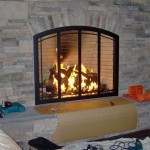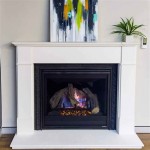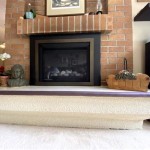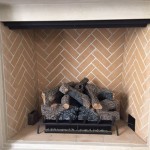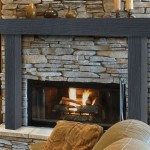Fireplace Flue Cleaning Brushes: Ensuring Safety and Efficiency
Maintaining a fireplace requires regular cleaning and inspection, and a crucial tool for this task is the fireplace flue cleaning brush. The flue, or chimney, serves as a conduit for smoke and combustion byproducts to exit the home. However, over time, creosote, soot, and other debris accumulate within the flue, posing a significant fire hazard and impeding the efficient operation of the fireplace. Regularly utilizing appropriate fireplace flue cleaning brushes is essential for preventing these potential problems.
Creosote, a highly flammable substance, is a byproduct of incomplete combustion. As it builds up on the interior walls of the flue, it reduces the chimney's draft and creates a serious fire risk. A chimney fire can spread rapidly to the rest of the house, causing extensive damage and endangering lives. Accumulated soot also restricts airflow, diminishing the fireplace's heating efficiency and potentially forcing smoke back into the living space.
Fireplace flue cleaning brushes are designed to remove these hazardous deposits, restoring the chimney's proper function and mitigating the risk of fire. Choosing the right brush and employing correct cleaning techniques are crucial for achieving optimal results and maintaining the longevity of both the chimney and the fireplace.
Understanding Different Types of Fireplace Flue Cleaning Brushes
A variety of flue cleaning brushes are available, each suited for different chimney shapes, sizes, and materials. Selecting the appropriate brush type is essential for effective cleaning and preventing damage to the chimney lining. The two primary categories of brushes are wire brushes and poly brushes.
Wire brushes are typically used for masonry chimneys, which are commonly constructed from brick, stone, or concrete. These brushes feature stiff wire bristles that are robust enough to dislodge creosote and soot from the rough surfaces of masonry chimneys. However, wire brushes should never be used on metal chimneys, as the abrasive bristles can scratch or damage the metal liner. The size and shape of the wire brush should correspond to the dimensions of the flue. Round brushes are generally used for round flues, while square or rectangular brushes are designed for correspondingly shaped flues.
Poly brushes, also known as polypropylene brushes, are designed for use with metal chimney liners, such as stainless steel or aluminum. The softer bristles of poly brushes are gentle enough to clean metal surfaces without causing scratches or damage. These brushes are also suitable for pre-fabricated chimney systems. Like wire brushes, poly brushes come in various shapes and sizes to accommodate different flue dimensions. Some specialized poly brushes are designed with flexible connectors that allow for navigating bends and offsets within the chimney flue.
In addition to the bristle material, the method of attachment to the cleaning rod also varies. Some brushes feature threaded connections that allow for easy attachment and removal from cleaning rods. Other brushes use a button-lock mechanism or a set screw for secure attachment. It is important to ensure that the brush and cleaning rod are compatible.
Furthermore, considering the brush's diameter or dimensions is crucial for effective cleaning. A brush that is too small will not properly clean the flue walls, while a brush that is too large may become stuck in the chimney. Measuring the flue's internal dimensions before purchasing a brush is highly recommended. For round flues, measure the diameter. For square or rectangular flues, measure the width and length.
Selecting the Right Cleaning Rods and Other Necessary Equipment
Besides the brush itself, appropriate cleaning rods are essential for reaching the entire length of the chimney flue. Cleaning rods are typically made of fiberglass, polypropylene, or steel. Fiberglass and polypropylene rods are lightweight and flexible, making them easy to maneuver through bends and offsets in the chimney. Steel rods are more rigid and durable, but they may be more challenging to use in chimneys with complex geometries.
Cleaning rods are typically sold in sections, allowing for adjustable lengths to accommodate chimneys of varying heights. The sections are connected using threaded couplings or push-button connectors. When selecting cleaning rods, it is important to ensure that the couplings or connectors are durable and secure. Loose or broken couplings can lead to the rods separating during cleaning, potentially causing the brush to become lodged in the chimney flue.
In addition to the brush and rods, several other pieces of equipment can enhance the chimney cleaning process. A chimney sweep's mirror can be used to inspect the interior of the flue for creosote buildup and other damage. A shop vacuum with a HEPA filter is essential for removing loose soot and debris from the firebox and the base of the chimney. Dust masks and safety glasses are important for protecting against inhalation of soot and dust. A drop cloth should be placed around the fireplace opening to protect the floor from falling debris.
Proper clothing is also important for personal safety. Wear old clothing that can be easily cleaned or discarded. Gloves will protect your hands from soot and grime. Consider wearing a hat to prevent soot from getting in your hair.
Effective Techniques for Cleaning a Fireplace Flue
Cleaning a fireplace flue can be a messy but rewarding task. It is generally recommended to clean the chimney at least once a year, or more frequently if the fireplace is used heavily. Before beginning the cleaning process, ensure that the fireplace is completely cool and that all ashes and embers have been removed from the firebox.
Begin by sealing off the fireplace opening with a drop cloth or plastic sheeting to prevent soot and dust from entering the living space. Create a small opening in the covering to allow access to the flue. Insert the brush into the flue and begin scrubbing the walls of the chimney. Use a firm, even motion to dislodge creosote and soot deposits. Overlap each stroke to ensure complete coverage of the flue's interior surface.
Work the brush up and down the entire length of the flue, adding sections of cleaning rod as needed to reach the top of the chimney. It is necessary to maintain a consistent and thorough scrubbing motion throughout the cleaning process. For chimneys with offsets or bends, use flexible cleaning rods and adjust the angle of the brush to navigate the obstructions.
Once the flue has been thoroughly scrubbed, remove the brush and rods from the chimney. Use a shop vacuum with a HEPA filter to remove the dislodged soot and debris from the firebox and the base of the chimney. Scrape any remaining creosote deposits from the firebox walls with a putty knife or scraper. Dispose of the collected debris properly. Creosote is flammable and should not be stored indoors.
After cleaning the flue, inspect the chimney for any signs of damage, such as cracks or broken bricks. If any damage is found, it is important to have it repaired promptly by a qualified chimney sweep. A damaged chimney can pose a significant fire hazard and should not be used until it has been properly repaired.
Regularly checking and maintaining the chimney cap is also crucial. The chimney cap prevents rain, snow, and animals from entering the chimney. A damaged or missing chimney cap can lead to water damage and blockages in the flue.
Finally, a smoke test can be performed to ensure that the chimney is drafting properly. Light a small amount of newspaper in the firebox and observe the smoke. The smoke should rise quickly and smoothly up the chimney. If the smoke lingers or flows back into the room, there may be a problem with the chimney's draft.
While cleaning the fireplace flue is a task many homeowners can undertake themselves, complex chimney systems or those with significant creosote buildup may require professional cleaning services. A certified chimney sweep can provide a thorough inspection and cleaning, ensuring the safe and efficient operation of the fireplace.

Flue Cleaning Brush Kit Standard Busy Bee Brushware

Vevor Chimney Sweep Kit 26 Ft Brush With 8 Nylon Flexible Rods And 2 Head Cleaning Tool Kits Ycs8mjewst0000001v0 The Home Depot

Buy Fire Brush Cleaning Kit With Extensions At Barbeques Galore

2x Chimney Flue Cleaning Brush Steel Wire Sweep Fireplace Tool Round

Chimney Cleaning Brush Fireplace Flue Sweep Whip Cleaner Tools 10ft Flexible Rod Com

Chimney Sweep Brush Cleaner Brushes Head For Flue Cleaning Com

Rotary Chimney Cleaners Brush Cleaning Sweep System Fireplace Flexible Rod Kit

Chimney Liner Brush With Flue Cleaning Rods Poly Kit Rockford

Vevor Chimney Sweep Kit 23 Ft L Brush With 7 Nylon Flexible Rods Rotary Cleaning Tool Fireplace Ycs7m000000000001v0 The Home Depot

Chimney Sweep Kit Duct Vent Cleaning Set Brush With 10 Bendable Flexible Rod 1 Head Drill Connector For Fireplace Flue Dryer Sewage Drainage Pipeline Temu Germany
Related Posts

